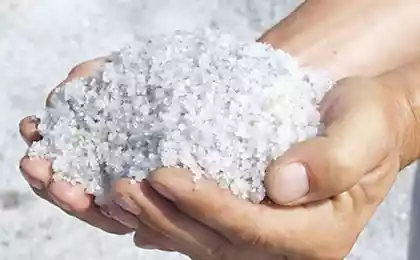804
Cleansing the body and soul
January 9 at Tokyo's ancient Shinto temple Kanda Myojin (Kanda Myojin) purification ceremony was held in honor of the New Year. The ritual was attended by 33 people, including several women.
16 ph via Bigpicture
1) The participants read the Scriptures before you start to pour ice water in the Kanda Myojin temple sintoistkom (Kanda Myojin), which is located almost in the center of Tokyo, not far from "Paradise Computer" for local geeks - Akihabara (Akihabara). (REUTERS / Kim Kyung-Hoon)
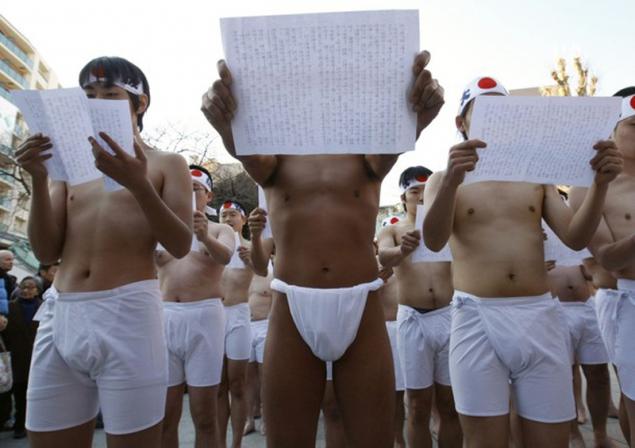
2) In the picture - sintoistky priest bows to the participants of the ceremony. (REUTERS / Kim Kyung-Hoon)
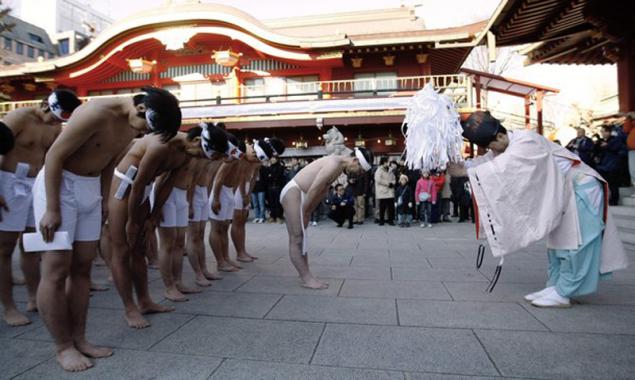
3) According to the tradition to participate in the ritual congregation dress only shorts or loincloths. (Junko Kimura / Getty Images)
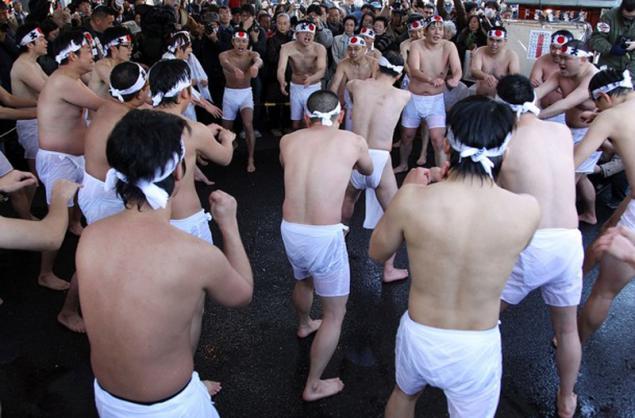
4) The faithful should read the prayer, and then complete the ritual ablution in the icy water. (REUTERS / Kim Kyung-Hoon)
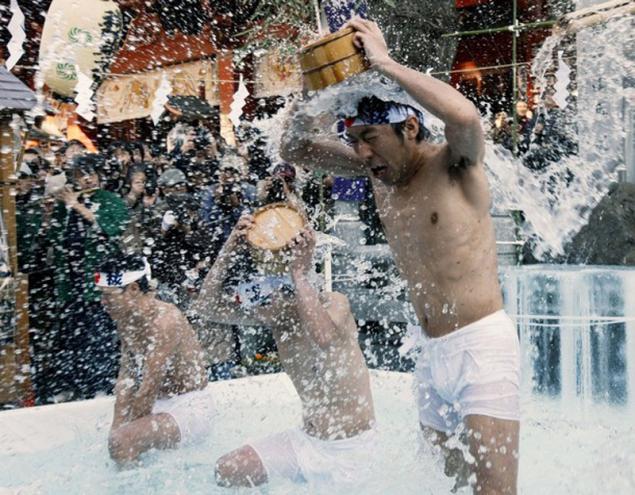
5) This year, the ritual was attended by several women. (REUTERS / Kim Kyung-Hoon)
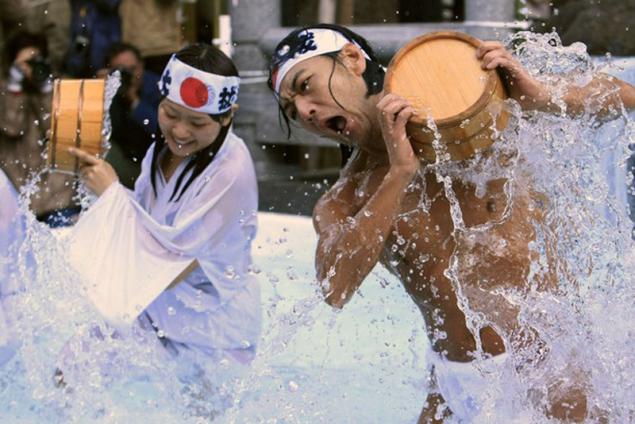
6) ceremony held in the temple of Kanda Myojin, which has long held ceremonies expulsion of evil spirits from the laptop, the blessings of various gadgets and even blogs. (Junko Kimura / Getty Images)
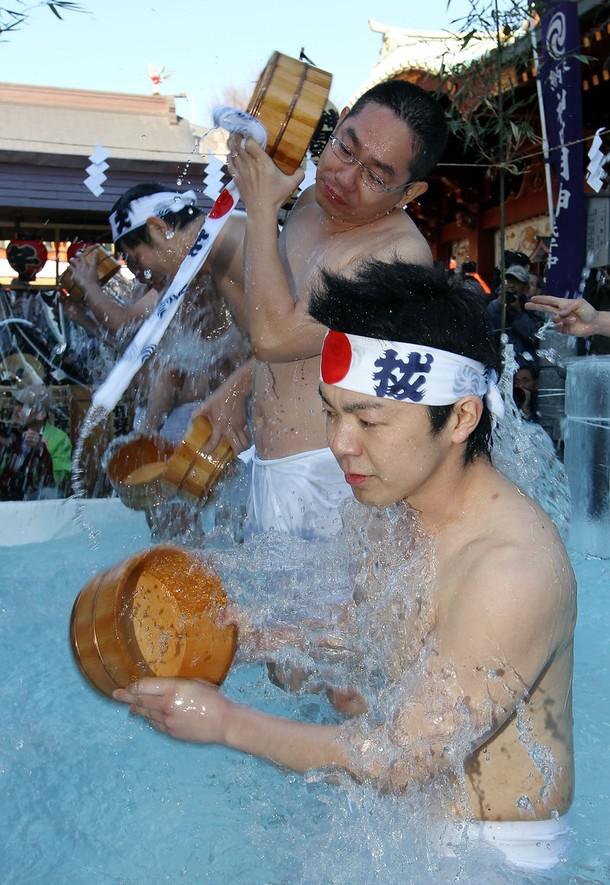
7) Note that the number of worshipers in the temple Kanda Myojin increased. Success in family life, protection against disease and evil eye, keeping the traveler on the road - the traditional business Kanda Myojin - remains concerned about the Japanese society. (Junko Kimura / Getty Images)
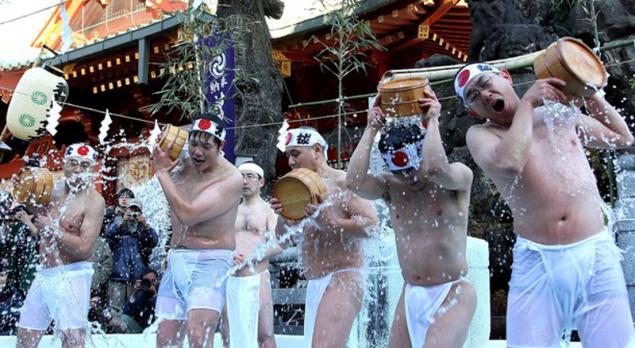
8) In their prayers Japanese are often asked about the end of the economic crisis. At the beginning of the year in the temple Kanda Myojin, which was built in the 8th century, the service took place, during which the people asked the gods to terminate financial difficulties. (Junko Kimura / Getty Images)
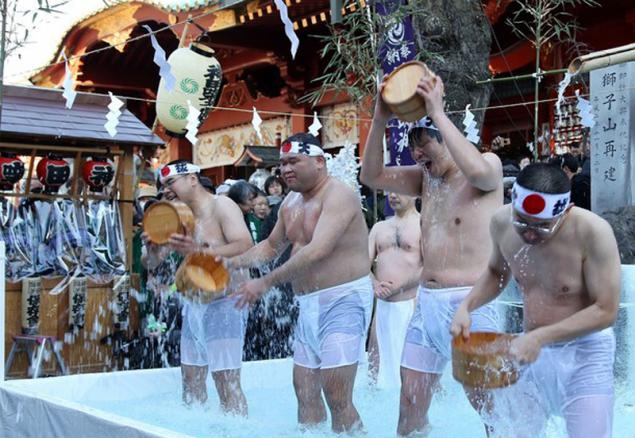
9) Produced yearly ritual symbolizes the purification of body and soul. Under the auspices of the deity of the temple Kanda Myojin are peace and harmony in the family, the marriage bond, the prosperity of commerce and success in business. (Junko Kimura / Getty Images)
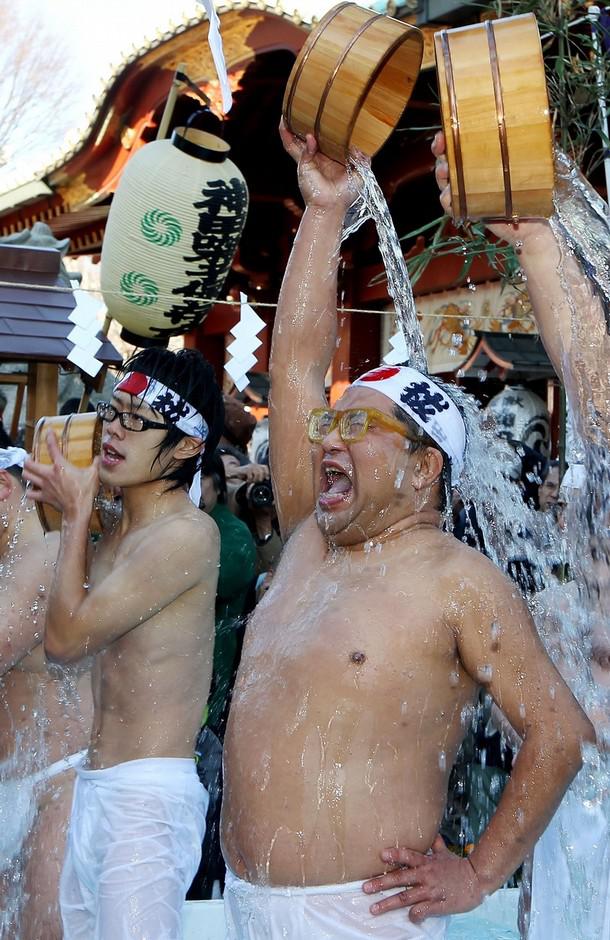
10) The ritual of cleansing is one of the most important of the traditional ceremonies celebrating the New Year in Japan. (REUTERS / Kim Kyung-Hoon)
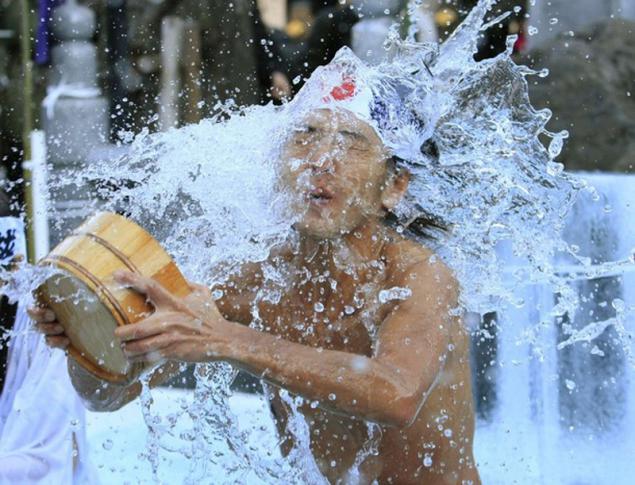
11) The Japanese believe that at the beginning of the year you need to wash the old dirt, which will go along with the errors and failures of the past year. (Junko Kimura / Getty Images)
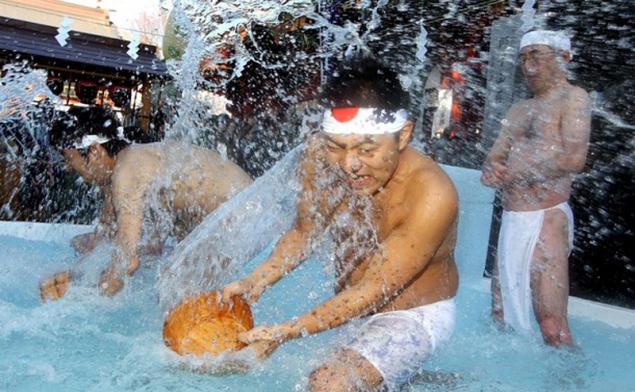
12) Once when the ritual purification of the soul and body of a man blowing a paper or a straw doll, she rubbed her body, and then the doll supposedly took away disease and sickness. (Junko Kimura / Getty Images)
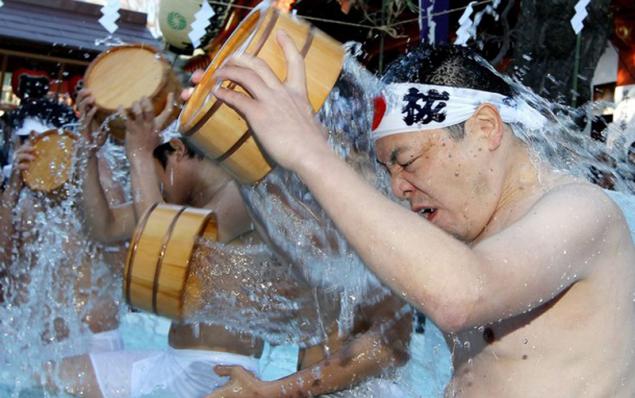
13) Then, the doll thrown into the river to the water stream carried away the doll, and with it all wrong. (REUTERS / Kim Kyung-Hoon)
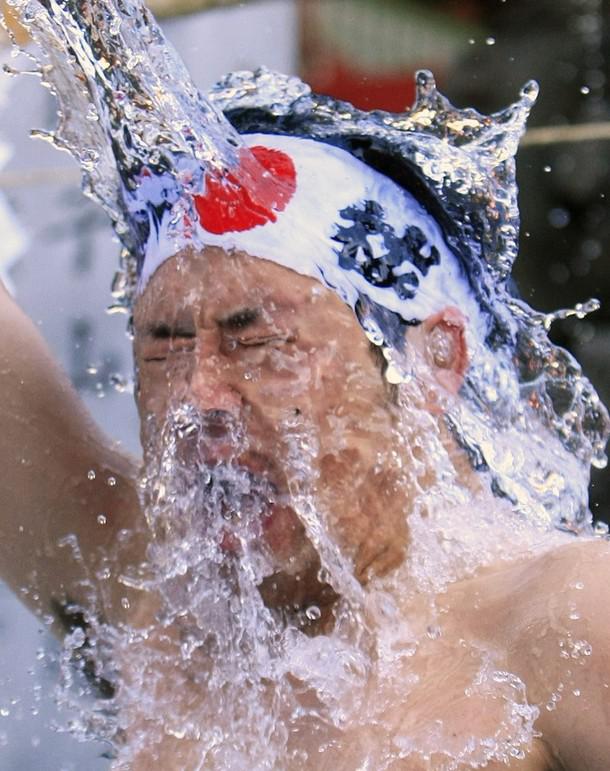
14) And now you can meet devotees of this ancient tradition, but a massive cleansing protection in cold water washing of his body. (Junko Kimura / Getty Images)
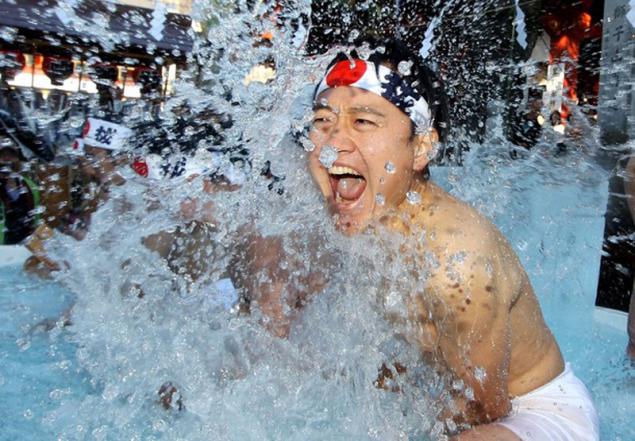
15) Myojin Shrine celebrated more than 1,200 years, although its current building is a replica built after the earthquake of 1923. (Junko Kimura / Getty Images)
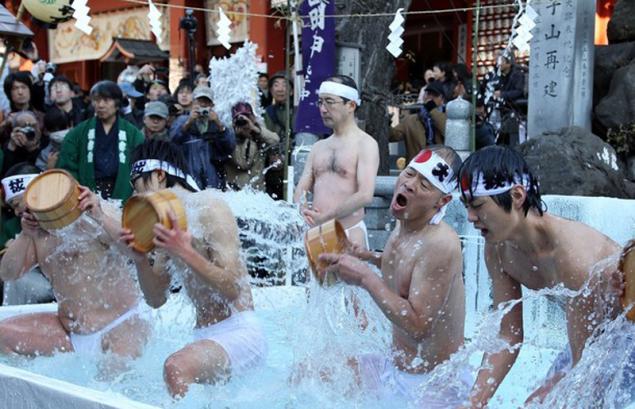
16) The ritual pouring ice water on endurance runs in the temple every year. Taking this kind of baths for heat-loving Japanese people is not easy. (REUTERS / Kim Kyung-Hoon)
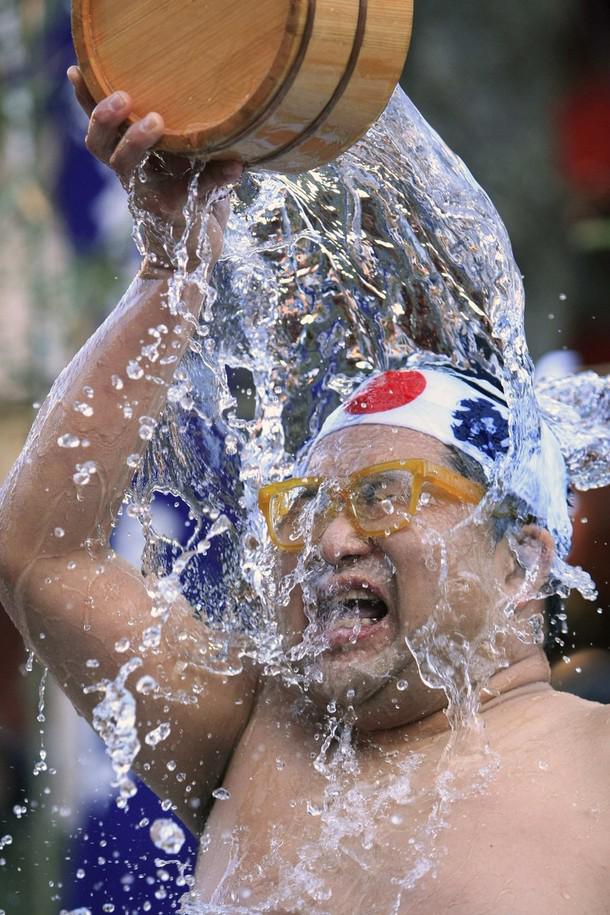
Source:
16 ph via Bigpicture
1) The participants read the Scriptures before you start to pour ice water in the Kanda Myojin temple sintoistkom (Kanda Myojin), which is located almost in the center of Tokyo, not far from "Paradise Computer" for local geeks - Akihabara (Akihabara). (REUTERS / Kim Kyung-Hoon)

2) In the picture - sintoistky priest bows to the participants of the ceremony. (REUTERS / Kim Kyung-Hoon)

3) According to the tradition to participate in the ritual congregation dress only shorts or loincloths. (Junko Kimura / Getty Images)

4) The faithful should read the prayer, and then complete the ritual ablution in the icy water. (REUTERS / Kim Kyung-Hoon)

5) This year, the ritual was attended by several women. (REUTERS / Kim Kyung-Hoon)

6) ceremony held in the temple of Kanda Myojin, which has long held ceremonies expulsion of evil spirits from the laptop, the blessings of various gadgets and even blogs. (Junko Kimura / Getty Images)

7) Note that the number of worshipers in the temple Kanda Myojin increased. Success in family life, protection against disease and evil eye, keeping the traveler on the road - the traditional business Kanda Myojin - remains concerned about the Japanese society. (Junko Kimura / Getty Images)

8) In their prayers Japanese are often asked about the end of the economic crisis. At the beginning of the year in the temple Kanda Myojin, which was built in the 8th century, the service took place, during which the people asked the gods to terminate financial difficulties. (Junko Kimura / Getty Images)

9) Produced yearly ritual symbolizes the purification of body and soul. Under the auspices of the deity of the temple Kanda Myojin are peace and harmony in the family, the marriage bond, the prosperity of commerce and success in business. (Junko Kimura / Getty Images)

10) The ritual of cleansing is one of the most important of the traditional ceremonies celebrating the New Year in Japan. (REUTERS / Kim Kyung-Hoon)

11) The Japanese believe that at the beginning of the year you need to wash the old dirt, which will go along with the errors and failures of the past year. (Junko Kimura / Getty Images)

12) Once when the ritual purification of the soul and body of a man blowing a paper or a straw doll, she rubbed her body, and then the doll supposedly took away disease and sickness. (Junko Kimura / Getty Images)

13) Then, the doll thrown into the river to the water stream carried away the doll, and with it all wrong. (REUTERS / Kim Kyung-Hoon)

14) And now you can meet devotees of this ancient tradition, but a massive cleansing protection in cold water washing of his body. (Junko Kimura / Getty Images)

15) Myojin Shrine celebrated more than 1,200 years, although its current building is a replica built after the earthquake of 1923. (Junko Kimura / Getty Images)

16) The ritual pouring ice water on endurance runs in the temple every year. Taking this kind of baths for heat-loving Japanese people is not easy. (REUTERS / Kim Kyung-Hoon)

Source:






















